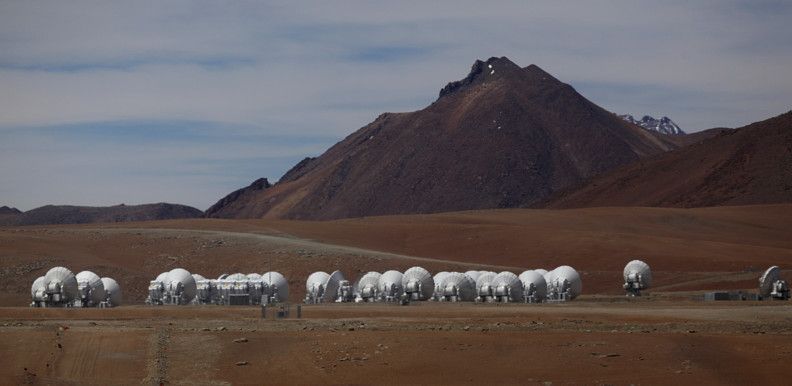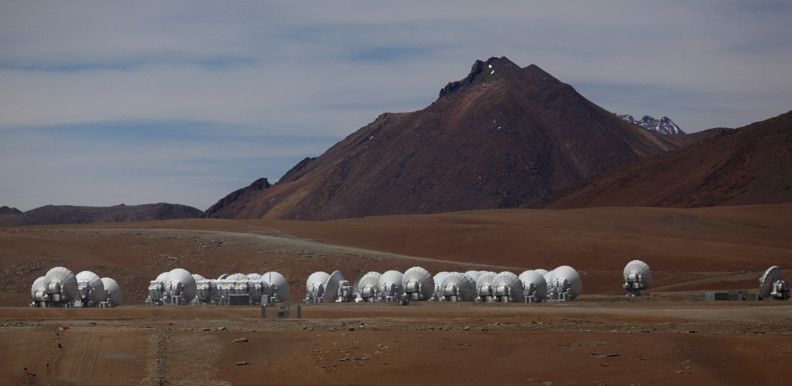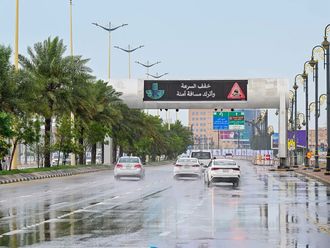
Washington: Located near the western coast of South America is a large plain near the Andes Mountains, the Altiplano of the Atacama Desert.
Standing at more than 4,000 metres high, this generally cold and dry spot on Earth also receives more sunlight than any other place on the planet - outshining locations that are higher in elevation and closer to the equator.
In fact, the plateau can see as much sun as Venus.
A recent study in the Bulletin of the American Meteorological Society measured a world record of solar irradiance (the output of light energy from the sun to Earth) of 2,177 watts per square metre on the Altiplano, which is also the second highest extensive plateau on Earth. That’s much higher than the radiation at the top of our atmosphere, which receives about 1,360 watts per square metre.
“It’s actually the radiation that you will be receiving in summer if you are standing up on Venus,” said study author Raul Cordero, a climatologist at University of Groningen in the Netherlands. He said that comparison is “incredible” because Venus is about 28 per cent closer than Earth to the Sun.
On average, the solar irradiance on the plateau is around 308 watts per square meter, still the highest worldwide. Cordero said the solar energy potential in the Altiplano is roughly, on average, twice as high than in Central Europe and the US East Coast.
“If you are exposed to such a high radiation danger, you have to protect your skin,” said Cordero. “At this particular location, for people working there . . . they are aware that the radiation was high, but now we know how really high.”
Satellite data have previously shown this area receives the most sunlight on Earth, but the new study analysed new measurements to help explain why this area experiences such extreme radiation. The measurements were conducted at the Chajnantor Plateau, a vast flat expanse standing at more than 5,000 meters high and means “lift off place.” It hosts major astronomical projects including the Atacama Large Millimetrs/Submillimetrs Array (ALMA).
Extreme radiation
The team found the extreme radiation can be traced back to thin, high-altitude clouds in the area.
Cordero explained that clouds often block sunlight or reflect radiation back into space, but thin broken clouds at this location can intensely focus the sun on the surface in a phenomenon known as forward scattering - like holding up a magnifying glass to the sun.
The study found these clouds, typically cumulus, cirrus or cirrostratus clouds, can enhance solar radiation on the surface by up to 80 percent compared to cloudless conditions.
These clouds are most pronounced in January and February during the summer in the southern hemisphere. The moisture that creates these clouds comes from the Amazon, during the South American monsoon.
“What was striking to me was how large the value can get under the conditions of forward scattering in Altiplano,” said Tirthankar Chakraborty, an Earth scientist at the Pacific Northwest National Laboratory who was not involved in the research.
“This is an interesting observational study of solar extremes possible on our planet, setting new records for shortwave radiation at the surface.”
Seiji Kato, an atmospheric scientist at NASA who was also not involved in the research, was not surprised at the study’s findings. He said when solar irradiance is transmitted through the atmosphere, it is absorbed by water vapor and scattered by clouds and aerosols. But a high elevation place that is located above the water vapor layer and has less clouds and aerosols would receive more sunshine.
Cordero said these clouds show up in other high-elevation places too, such as the Himalayan plateau, but they still don’t experience as high solar radiation values.
7% higher
For one, summer in the northern hemisphere is less intense than its counterpart in the southern hemisphere. During summer in the southern hemisphere, Earth’s orbit is closer to the sun and reaches a point called perihelion in early January. More ozone molecules
As a result, solar irradiance is up to 7 per cent higher in the southern hemisphere than the northern.
Second, the northern hemisphere also has more ozone molecules from the surface to space than the southern hemisphere. Ozone molecules higher in our atmosphere act as a natural sunscreen and protect us from the sun’s radiation.
The study, Kato pointed out, also only looks at downward solar irradiance, but there are other radiation sources to consider as well.
For instance, he said the surface also receives irradiance emitted by the atmosphere, which we can’t see and isn’t useful for solar power. But when clouds (especially low-level clouds) are present in the atmosphere, he said that radiation emitted by the atmosphere can be greater than the radiation coming directly from the sun on a cloudless day. That’s also the reason you may feel warmer standing outside on a cloudy winter night than on a clear winter night.
If you were to add both the solar irradiance and atmospheric irradiance, data from the NASA CERES satellite show that the largest irradiance at the surface occurs in an equatorial region over the Pacific Ocean, said Kato, who is also a member of the satellite team.
The sunniest spots also don’t always correspond to hottest places, either. Another recent study, authored by Chakraborty, determined the hottest places in the world for human discomfort, placing cities in Bahrain, Qatar, Saudi Arabia and Pakistan at the top.
Additionally, he and his colleagues found that most of the urban areas with extreme hot and cold temperatures were generally in medium to small cities. “Solar radiation does generally relate to temperature . . . but there will be exceptions though,” he said.
Cordero explained that air and surface temperatures depend on a lot more than just solar radiation. For instance, the atmosphere near the Altiplano is relatively cool because of its high elevation.
The adjacent Pacific Ocean, which receives water currents near Antarctica, also helps keep the area cooler than land near warmer oceans like the Mediterranean seas. Vegetated areas may also be cooler than dry, arid surfaces because the plants cool the surface through evapotranspiration.
The Altiplano is “not affected by heat waves in the case of Bahrain, Middle East or the Mediterranean region,” said Cordero.













